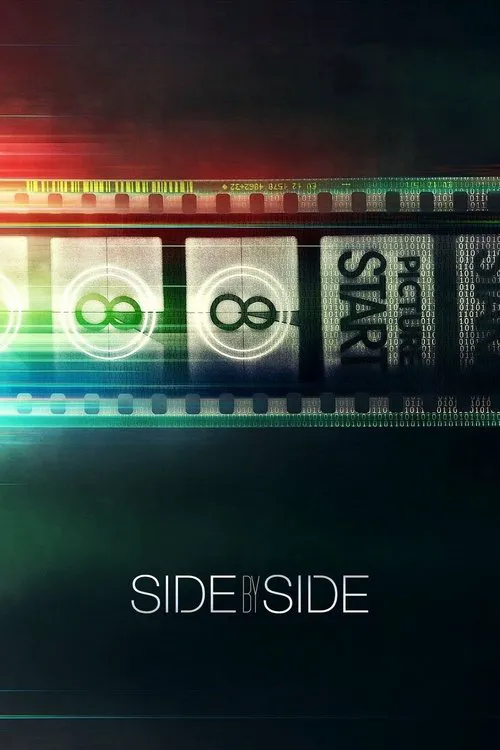Side by Side

Plot
Side by Side is an in-depth documentary film that explores the evolution of cinema from film to digital technology. The documentary serves as a comprehensive examination of the medium's transformation, featuring insightful interviews with renowned filmmakers, critics, and cinematographers. Keanu Reeves, the film's director, delves into the history of cinema, highlighting the advantages and disadvantages of both analog and digital filmmaking techniques. The documentary commences with a brief overview of the early days of cinema, showcasing the first films and the technological advancements that facilitated the growth of the industry. Reeves' conversation with cinematographer Emmanuel Lubezki provides a unique perspective on the art of filmmaking, emphasizing the importance of understanding the limitations of technology to create meaningful storytelling. A significant portion of the documentary is dedicated to discussing the emergence of digital filmmaking, which gradually gained prominence towards the end of the 20th century. James Cameron's pioneering work on the first digital film, "Titanic," serves as a pivotal example of the medium's potential. Cameron's passion for digital filmmaking is palpable as he explains the advantages of shooting on a digital canvas, allowing for greater flexibility and speed in post-production. David Fincher, known for his distinct visual style, discusses the aesthetic benefits of shooting digitally, particularly in regards to color grading. Fincher highlights the limitations of film, citing that it cannot replicate the range of colors achievable through digital means. The director also touches upon the topic of digital noise, emphasizing the importance of understanding and embracing its unique characteristics to create a distinctive visual identity. David Lynch, an auteur known for his unconventional approach to storytelling, shares his reservations about digital filmmaking. Lynch believes that film has a unique warmth and texture, which is impossible to replicate digitally. He emphasizes the tactile nature of working with film stock, citing that it allows for a more organic and spontaneous creative process. Christopher Nolan, the director behind several big-budget blockbusters, discusses the limitations of digital filmmaking in terms of the format's susceptibility to technical issues. Nolan emphasizes the importance of having control over the technical aspects of filmmaking, which is sometimes lacking in digital workflows. He also touches upon the topic of film's anachronistic charm, suggesting that the imperfections inherent in film's grain structure can add a layer of authenticity to a cinematic experience. Martin Scorsese, a filmmaker who has been a long-standing advocate for film preservation, shares his concerns about the gradual disappearance of film technology. Scorsese reflects on the beauty of film, citing its texture, its fragility, and its ability to tell stories in a unique, tactile way. He emphasizes the importance of preserving film's history, ensuring that the knowledge and skills associated with film are not lost with its increasing obsolescence. George Lucas, the visionary behind the Star Wars franchise, offers a candid appraisal of both digital and film technologies. Lucas discusses the financial implications of adopting digital filmmaking, highlighting the increased efficiency and cost-effectiveness it offers. However, he also notes the emotional connection that viewers develop with films shot on traditional analog formats. Steven Soderbergh, a filmmaker known for his willingness to experiment with unconventional narrative structures, explores the topic of digital filmmaking's democratizing potential. Soderbergh highlights the accessibility of digital technology, suggesting that it has democratized filmmaking by allowing more people to enter the industry. He also touches upon the idea of digital cinema's global reach, enabling films to be distributed and consumed by a vast, worldwide audience. Throughout the documentary, Keanu Reeves serves as an attentive interviewer, encouraging his subjects to delve deeper into their perspectives on film and digital technologies. He provides a platform for filmmakers to share their experiences, showcasing the complexities and nuances involved in the filmmaking process. The documentary culminates with a comprehensive comparison of film and digital technologies, highlighting the benefits of each medium. Side by Side serves as a testament to the ever-evolving nature of cinema, demonstrating that each technological advancement brings forth new creative possibilities and aesthetic challenges. The documentary serves as a vital resource for filmmakers, film historians, and anyone seeking a deeper understanding of the intricacies involved in the art of filmmaking.
Reviews
Recommendations




